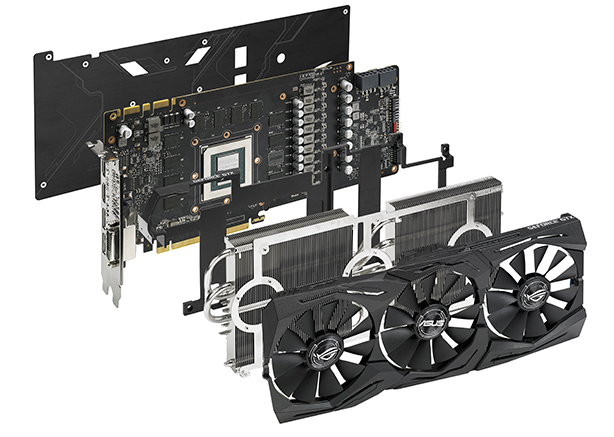Performance Analysis
GTX 1080 Ti installs itself as the first GeForce card able to handle most games at a 4K resolution, and the performance advantage over a well-tuned GTX 1080 is roughly one third more. The premium Asus implementation, Strix OC Gaming, pushes its cores to run at a sustained 1,920MHz, meaning the benchmark results are a hair behind the similar Inno3D card whose memory is overclocked.Even with our most stringent settings, the Asus card is playable at 4K. It makes a lot of sense to pair it up with a 4K G-Sync monitor for unrivalled gameplay.
Fluid performance aside, the Asus card's huge heatsink makes it relatively cool and quiet, and we reckon it is better than the Founders Edition in every meaningful metric other than price.
Conclusion
The GeForce GTX 1080 Ti GPU is set to rule the graphics roost until at least AMD's Vega arrives. Even then, the Radeon team will have a hard time toppling the might of Nvidia's finest hardware. Getting GTX 1080 Ti into the hands of partners is a sage move, as it enables differentiation and plays on brand loyalty.Asus takes the premium approach to this monster GPU and creates a big, powerful card that is good in every way. We'd like to see the company do more in terms of memory overclocking, but if you are seriously looking down the financial barrel of a GTX 1080 Ti, it will be hard to beat the Strix OC Gaming from an all-round perspective. Owners of recent Asus motherboards are in for an extra visual treat through Aura Sync technology.
£800 is heck of a a price to pay for a single graphics card, but as it stands today, we have seen no finer one pass through the bit-tech labs.


MSI MPG Velox 100R Chassis Review
October 14 2021 | 15:04










Want to comment? Please log in.